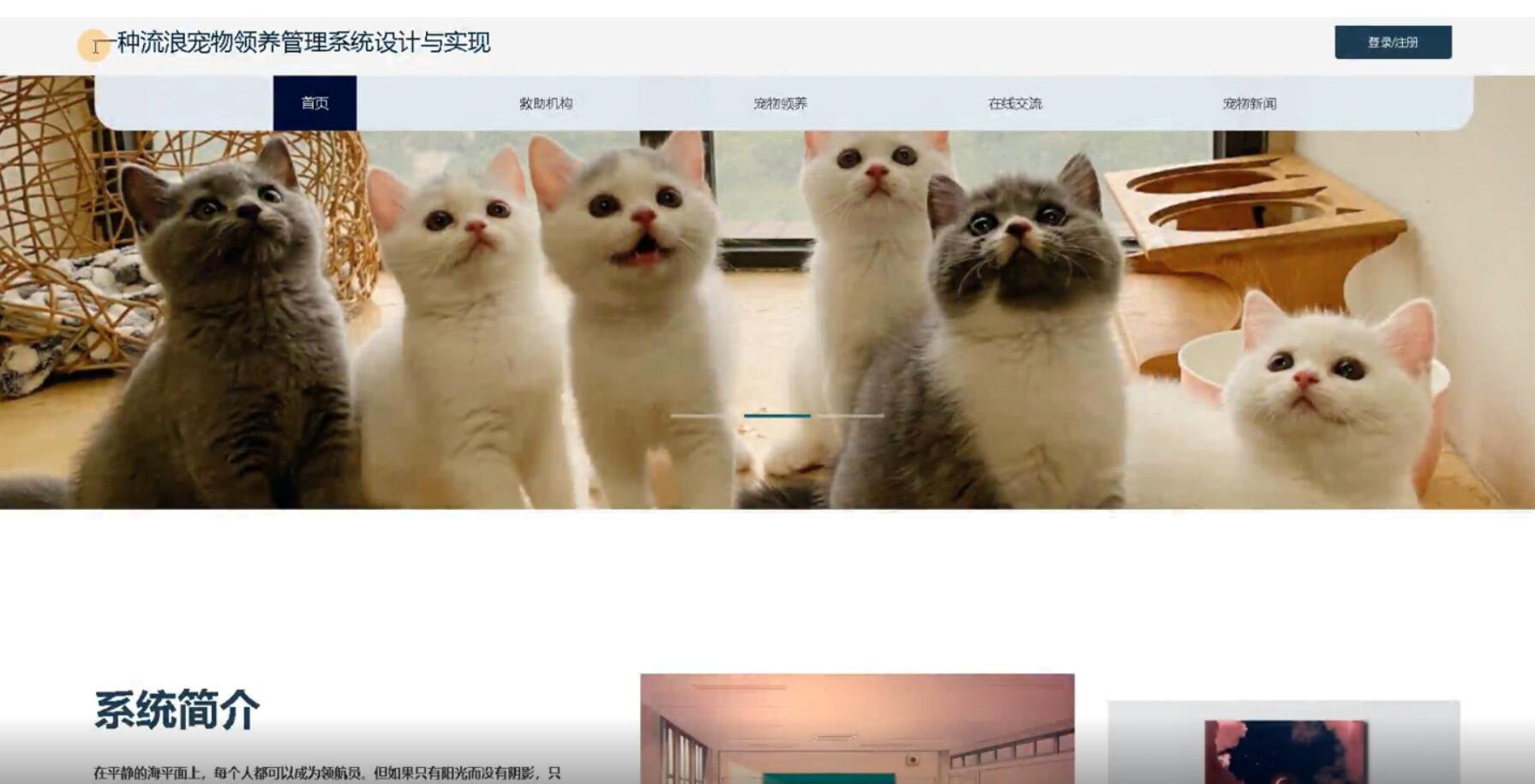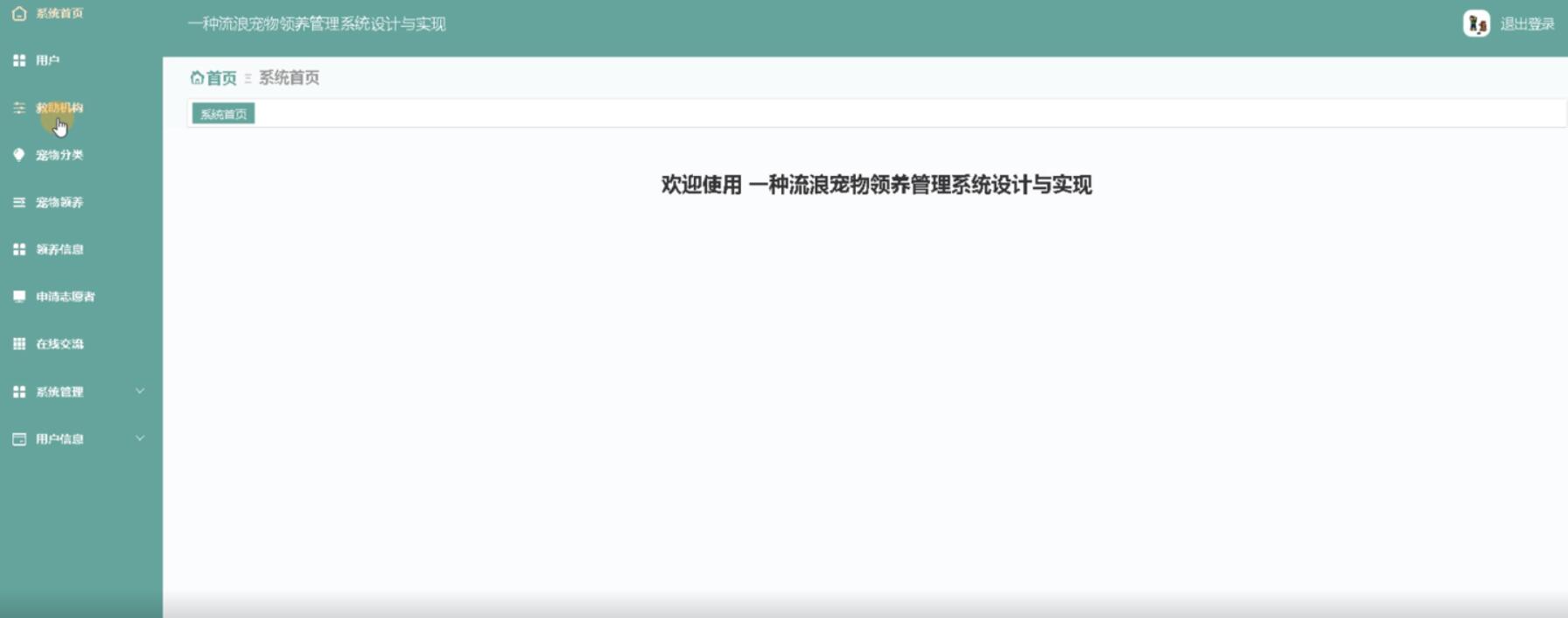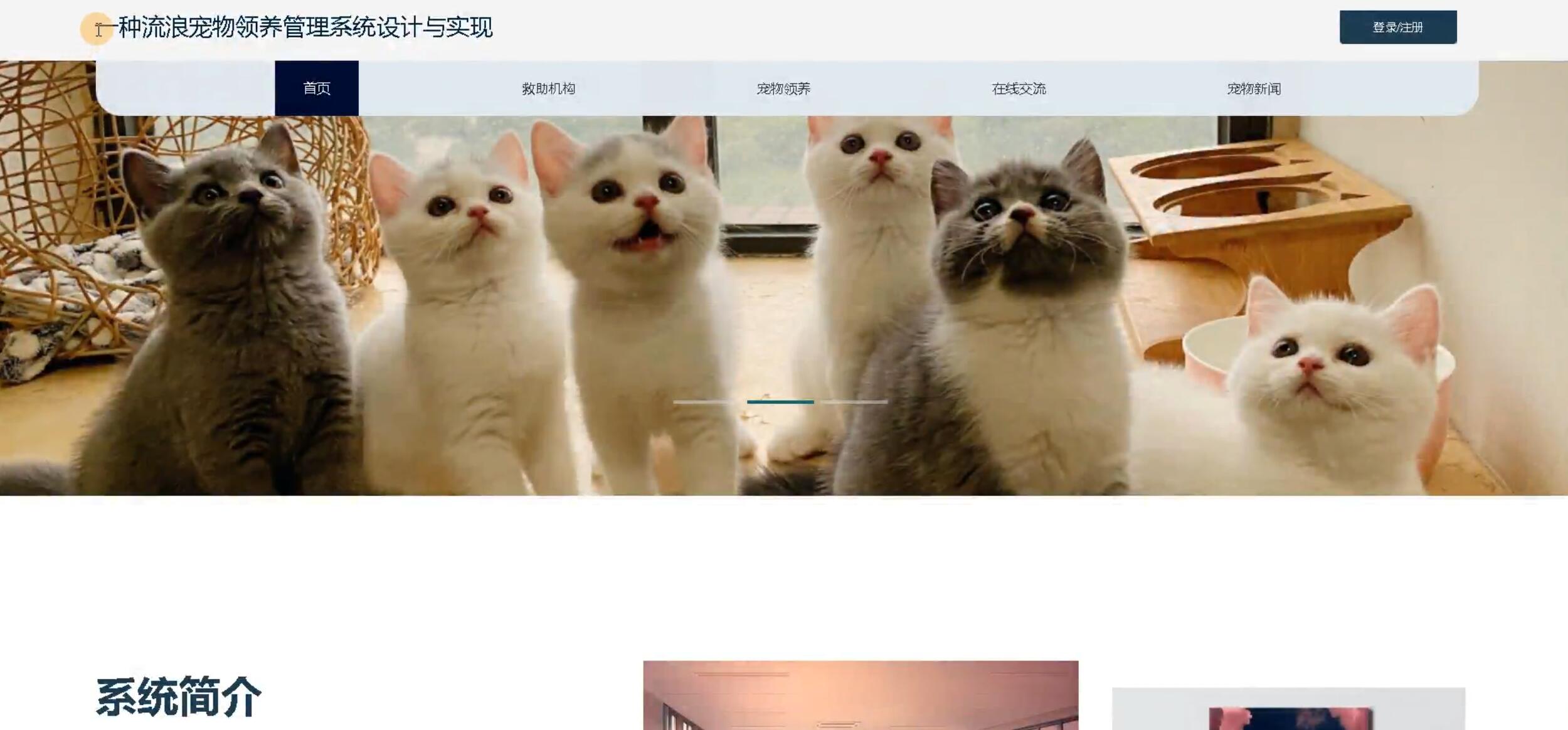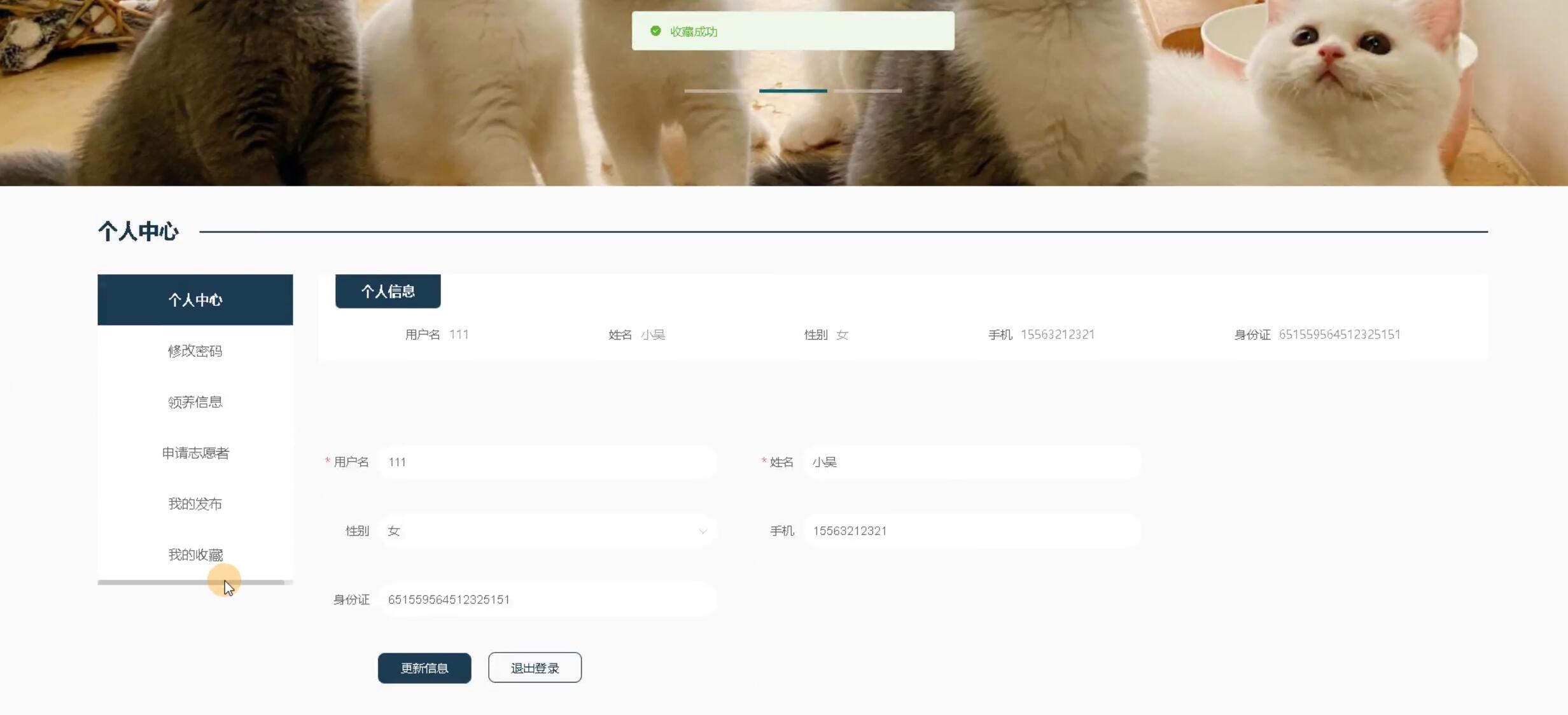摘 要
随着科技的进步,各类管理系统已逐渐融入社会的各个角落,极大地提高了工作效率和节约了时间。在宠物服务领域,涉及宠物领养处理、信息档案查看、治疗处理、宠物健康知识传播以及宠物保护资讯等多个环节,传统的人工管理方式既耗时又易出错。因此,引入流浪宠物领养管理系统成为一种必要,它能全面优化领养流程,提升宠物领养管理的效率。
本文首先概述了流浪宠物领养管理系统的现状,并深入研究了开发此系统所依赖的主流技术。在多种技术方案中,最终选择了使用Python的django框架和轻量级的关系型MySQL数据库。随后,进行了系统的需求分析、功能设计和数据库设计,并完成了编码实现。此系统主要包括前台和后台两部分。前台主要负责信息展示和用户交互,如信息浏览、领养业务查看和在线交流等;而后台则负责管理救助机构管理、认领管理以及宠物领养管理等功能。
该系统不仅为宠物饲养者提供了便捷、高效的领养管理方式,也极大地方便了人们的生活。同时,它还帮助宠物救助机构快速在线管理领养信息,显著提高了领养效率。
关键词:宠物领养;救助机构;Python;django;流浪宠物
Abstract
With the advancement of technology, various management systems have gradually integrated into every corner of society, greatly improving work efficiency and saving time. In the field of pet services, there are multiple links involved, including pet adoption processing, information file viewing, treatment processing, pet health knowledge dissemination, and pet protection information. Traditional manual management methods are both time-consuming and prone to errors. Therefore, the introduction of a stray pet adoption management system has become necessary, as it can comprehensively optimize the adoption process and improve the efficiency of pet adoption management.
This article first provides an overview of the current situation of the management system for stray pet adoption, and conducts in-depth research on the mainstream technologies relied upon for the development of this system. Among various technical solutions, the final choice was to use Python's django framework and a lightweight relational MySQL database. Subsequently, system requirements analysis, functional design, and database design were conducted, and coding implementation was completed. This system mainly includes two parts: front-end and back-end. The front desk is mainly responsible for information display and user interaction, such as information browsing, adoption business viewing, and online communication; The backend is responsible for managing functions such as rescue agency management, claim management, and pet adoption management.
This system not only provides a convenient and efficient adoption management method for pet owners, but also greatly facilitates people's lives. At the same time, it also helps pet rescue agencies quickly manage adoption information online, significantly improving adoption efficiency.
KeyWords: pet adoption; Rescue agencies; Python; Django; Wandering pets
目 录
摘 要 I
ABSTRACT II
1 绪论 5
1.1系统开发背景 5
1.2系统开发意义 6
1.3研究内容 7
2 相关技术介绍 8
2.1 Python技术 8
2.2 django框架 8
2.3 MySQL数据库 9
3 系统分析 10
3.1可行性研究 10
3.1.1操作可行性 10
3.1.2经济可行性 10
3.1.3技术可行性 10
3.2需求分析 10
3.2.1 管理员用例图 11
3.2.2 宠物救助机构用例图 11
3.2.3 会员用例图 12
3.3非功能需求分析 13
4 系统设计 15
4.1系统架构设计 15
4.2系统功能设计 15
4.2.1系统管理模块设计 15
4.2.2用户管理模块设计 17
4.2.3宠物诊疗管理模块设计 18
4.2.4宠物领养管理模块设计 20
4.3数据库层的设计 20
4.4.2 数据库逻辑结构设计 20
4.4.3 数据库物理结构设计 22
5系统实现 35
5.1前台首页的实现 35
5.2用户登录模块实现 35
5.3系统管理模块的实现 36
5.4用户管理模块的实现 37
5.5宠物诊疗预约管理模块的实现 38
5.6公告资讯管理模块的实现 39
5.7宠物领养的实现 40
6系统测试 43
6.1测试目的 43
6.2测试用例 43
6.3测试分析 45
总结 47
致谢 48
参考文献 49
前台会员,领养中心,在线领养,查看机构、申请志愿者、在线交流、我的认领。
后台管理员:用户管理、救助机构管理、公告管理、志愿者管理、审核志愿者、交流管理。
后台救助机构:发布领养、审核领养、认领管理。
随着科技的飞速发展,人们的生活得到了极大的改善。流浪宠物领养管理系统正是基于这样的背景下,为了解决流浪宠物管理难题而开发的。它不仅方便使用,而且能显著提高管理效率。可以预见,利用信息技术手段提高管理效率将是未来各行业发展的重要趋势。
本文首先对系统的开发背景和意义进行了探讨,并对国内外现状进行了分析。结合现有的成熟软件开发技术和个人的学习经历,我选择了Python和MySQL作为开发工具。在第二章,我简要介绍了这些技术,并进行了流浪宠物领养管理系统的需求分析。通过可行性分析,我认识到开发此系统的必要性,并详细介绍了系统的需求,包括管理员和用户两个角色。随后,我对系统进行了详细设计和数据库设计。在最后一章,我介绍了实现算法的过程和关键性测试用例。
尽管已经尽力开发这个系统,但作为一个初次接触系统开发的人,我深知这个系统仍有许多不足之处。例如,数据的查询优化。目前,仅使用10万条数据进行了测试。如果未来数据量增大,可能会导致响应时间延长,因此需要进一步优化数据库设计。此外,在界面美观方面,我也需要学习更多关于色彩搭配和页面布局的前台编程技术。
在未来的工作中,将不断总结经验,进一步完善这个系统。同时,我会结合实际情况,持续优化系统的功能和性能。


























 被折叠的 条评论
为什么被折叠?
被折叠的 条评论
为什么被折叠?








